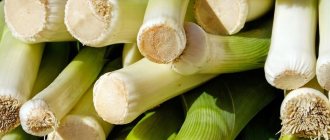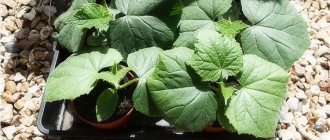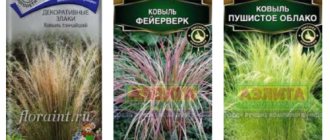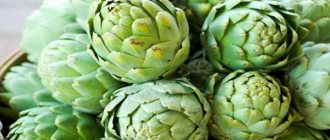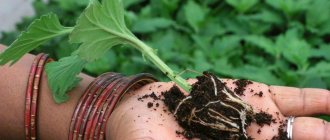Choosing a tomato variety for a greenhouse
Before naming the best varieties of tomatoes for the greenhouse, which have taken root and produced a bountiful harvest for summer residents, it is worth considering a number of criteria.
Before purchasing seeds, it is important to consider:
- the duration of the growing season of the variety; early species are often grown under film;
- purpose of tomatoes: pickling or fresh consumption;
- shade tolerance, resistance to temperature changes;
- how does pollination occur?
- Is there resistance to pests, fungal and viral diseases?
The selected variety must meet greenhouse requirements. It is important to consider the growing region recommended by the manufacturer.
In the table I will give a rating of greenhouse tomatoes, which give a good harvest according to the reviews of most gardeners.
| Category | Variety names |
| Indeterminate | Octopus; De Barao Tsarsky; Yellow Heart; Auria; Major, Creme Brulee. |
| Determinant | Rose honey; Doll Masha; Doll Dasha; Bourgeois; Grandma's Grandson. |
| Large-fruited | Japanese Crab; Altai honey; Lemon giant; Bull's heart. |
| short | Explosion; Tanya; Doll; Gina; Alsou; Bonus. |
| Late | Abakan pink; St. Andrew's surprise; Banana; Cheerful neighbor. |
| Early | Dad; Money bag; Alaska; Flash; The pearl is red. |
| High-yielding | Babushkino; Miracle of the Earth; Nobleman; Kostroma; Bohemia. |
When purchasing seeds, it is important to pay attention to the expiration date of the planting material. The packaging indicates a barcode, cultivation technology, and manufacturer's address.
Tomato variety Altai honey
Planting seedlings in open ground
Planting tomatoes in the ground requires minimal preparation. To do this, it is enough to select an area that will be rich in nutrients and well lit; the rest is a matter of technology.
Experienced vegetable growers have long noticed that annual planting of seedlings in the same place will not bring the desired results - fruiting will decrease, and the bushes will begin to hurt. This is due to the fact that the soil has depleted its natural minerals over the previous season, so vegetable crops in this area should be rotated.
But if this is not possible, the soil can be prepared for the next season in the fall - healthy, tomato tops can be chopped and mixed with the top layer of soil. Over the winter it will rot and enrich the soil.
Greenhouse preparation
They begin to prepare the soil in the plant house 2-3 weeks before transplanting. In the Central region, crop farming begins at the end of March.
How to prepare the soil
The culture takes root well and grows on chernozem soils with neutral and slightly acidic acidity. Preferred pH level = 6. Ash or dolomite flour at the rate of 1 kg per sq.m. will help reduce acidity. If the site is dominated by sandy loam, sandy, clay or loamy soil, then the soil needs to be improved.
Digging soil in a greenhouse
Please note: fresh manure cannot be brought into the greenhouse. Fresh peat contains many acids and living bacteria that destroy standing plants.
Preparation stages:
- Soil disinfection . The most accessible remedy is potassium permanganate. Dilute the crystals of the drug to a light pink color, pour over the area.
- After 1-2 days, add organic fertilizer if necessary. Humus or compost is suitable in an amount of 4-5 kg per 1 sq.m.
- Sprinkle dry fertilizer containing elements of nitrogen, potassium, and phosphorus over the area. Dig everything up.
If there is no time to use the presented preparation scheme, then organic matter and mineral fertilizers are added to the hole before transplanting.
To grow crops indoors, the material from which the greenhouse is made is taken into account. If the frame is made of polycarbonate, it is treated with antibacterial agents to reduce the risk of fungal diseases. More often, disinfection is carried out in the fall, when the crops are harvested. But spring treatment is also allowed 3-4 weeks before planting.
Greenhouse treatment
Temperature
Tomatoes are heat-loving plants. In an enclosed space, it is important to monitor air parameters. Plants cannot tolerate high humidity; it is optimal to maintain 70-75%. The growth of roots and green mass is maximum when temperatures remain at +20+24°C during the day and +17°C at night.
Peduncles stop developing in two cases: if the thermometer drops below +12°C or above +30°C. The crop can withstand short-term cooling down to +8+10°C, but the fruits will ripen a little later, which will affect the taste.
What is the care of tomatoes?
Caring for tomatoes in open ground consists of mandatory steps, including:
- Watering;
- Stepsonning;
- Removing foliage;
- Hilling, weeding and loosening;
- Fertilizer;
- Mulching.
Harvesting tomatoes
Harvesting tomatoes in a greenhouse or in open ground is the culmination of the entire process of growing a plant. At the same time, the timing of harvest ripening depends on various conditions: on the variety, region of growth (that is, on weather and climatic conditions), and method of cultivation.
Advice! Ripe fruits should not be left on the bushes, otherwise they will interfere with the normal ripening of other fruits. That is, harvest tomatoes in a timely manner!
Fruit ripening occurs gradually, and harvesting is carried out at different stages depending on the purpose:
- Milky ripeness - they are not yet fully ripe, but already have the size and weight of a ripe fruit, the skin color may have a milky tint and a pinkish core; such specimens should be collected if you want to store the crop for 2 weeks with ripening.
- Blazing ripeness - the fruits have a pinkish tint to the skin, after about a week they are completely painted in the color characteristic of the variety. They should be collected in this phase if you want to store them for a week with ripening.
- Full ripeness - tomato fruits have a weight, size and color that fully corresponds to the characteristics of a ripe fruit of this variety. You should collect such fruits when you want to immediately eat them or pickle them, can them, make tomato juice, or paste.
Advice! To keep the fruits as long as possible, you can remove them from the bush along with the stalk!
What to do after harvesting
After a complete harvest of tomatoes in a greenhouse or in open ground, you need to take care of the area in the garden where the crop was grown.
- First of all, it is necessary to completely clear the area of plant debris.
- It is advisable to remove the top layer of soil (about five centimeters) because... Pest larvae may live in it.
- If the bushes were in a polycarbonate greenhouse, then it needs to be washed.
- It is recommended to disinfect the greenhouse, for example, by fumigating with a sulfur bomb.
- The soil on the site is being dug up.
- After this, it is advisable to dig up the ground in the fall with fertilizers, for example, humus and peat.
Stepsoning
Stepping is getting rid of excess shoots. This item can be excluded if self-forming varieties predominate in the garden; for all others, the procedure must be carried out once every 1.5-2 weeks or as needed.
In order to propagate correctly and not cause harm, the shoots should not exceed 5 cm, and the residual stumps should not exceed 1 cm - then infection with diseases and re-germination of the shoot will not threaten the bush.
Pinching is carried out to reduce the branching of the plant. You should leave 1-2 main stems, with several tassels, otherwise the fruits will be small or will not have time to set, since the bush does not have enough strength for this.
Properly prepare tomato seeds for planting
Prepared seeds are usually sown in one place, 2-3 seeds, so that after germination of the seeds there is an opportunity to select stronger sprouts. If the seeds are planted in a greenhouse, sowing is done in rows close to each other (5 cm) in order to rationally use the sown area.
Pre-sowing seed treatment is divided into two stages: the first stage is warming up; Stage 2 - disinfection in a 1 percent manganese solution. These procedures will improve seed germination and disease resistance. Warming up is carried out at a temperature of 40 degrees for about 48 hours, after which repeated heating for 72 hours at a temperature of 50 degrees.
After warming up, the seeds are dipped in a 1 percent manganese solution, the floating (empty) seeds are removed, and those that have sunk are kept in the solution for 10-15 minutes. After the disinfection procedure, the seed material must be washed in running water.
When planting seeds in greenhouses (greenhouses), it is better to cover them with covering material to maintain low but sufficient humidity and ground temperature, and then it will be easier to care for the tomatoes: watering will be reduced due to moisture retention.
Hilling, weeding and loosening
Planting and caring for tomatoes in open ground cannot do without these operations:
- Weeding is a necessary operation to remove weeds from the garden bed, performed as needed;
- Loosening is the process of enriching the soil with oxygen by loosening the soil around the stem. It is advisable to carry out this after each watering, avoiding the formation of a hard crust and then cracking of the soil;
- Hilling is a necessary process of forming additional roots in a bush. This is done by pouring moist soil under the stem on which tubercles have become noticeable. This should be done for the first time 2 weeks after planting, and then as needed.
It’s very good to combine all three processes; it’s convenient and will save time and effort.
Tomato diseases: signs and methods of control
The most well-known tomato diseases among gardeners are: late blight, brown spot, macrosporiosis, streak, septoria, stolbur and blossom end rot. They bring a lot of trouble. How to care for tomatoes if they are sick?
Late blight is a putrefactive plant disease. When damaged, the entire plant dies. It spreads by spores, completely destroying the bush when infected. Spreads by airborne droplets through infected seeds. The spore enters our tomatoes through “weak points” - these are stomata, mechanical damage, and buds. One of the important components of pores entering the plant is the presence of moisture on the plant. Moisture helps spores penetrate the plant body. Therefore, one of the preventive measures is to keep the leaves dry and the humidity in the greenhouse moderate.
Brown spot - signs: on the base of the leaf there is a gray or yellow coating in the form of veins. On the other side of the leaf there is a brown coating in the form of spots. Brown spot spreads quickly, infecting almost all the leaves on the plant and the tomato bush dies.
Macrosporiasis : signs - the leaves turn yellow and dry out at the edges, begin to curl, then die; methods of control are the immediate removal of infected leaves from the plant. There is no point in caring for affected tomatoes anymore!
Streak is a viral disease. Characteristic signs - brown lesions appear on the plant in the form of spots or streaks. It is impossible to cure streaking; it can only be prevented by treating the seeds with potassium permanganate; you can also water it with a 0.2% solution of potassium permanganate.
Stolbur - underdevelopment and change in flowers - they are clearly underdeveloped: the petal lengthens and turns green, the sepal is deformed, the stamens dry out, the pistil has a crooked, underdeveloped style. Such a flower does not form ovaries, and if the fruit does set, it has an irregular shape, is unevenly colored, and does not ripen. The section shows white vascular tissue. It is not recommended to eat such fruits.
Apical rot - from the beginning we begin to notice that the stalk begins to dry out and if the fruit is not removed in time, then sputum forms under it and the fruit dies.
In addition to an infectious or viral disease, one of the possible reasons for weakening tomatoes is a lack of calcium. Therefore, at the first signs of the disease, it is necessary to feed the plants with fertilizer containing calcium. In this case, you can use wood ash, which contains all the mineral fertilizers in the required quantity.
If tomatoes are grown in a greenhouse, it is necessary to strictly control that the air temperature never exceeds 30 degrees, otherwise pollination of the plants does not occur and much less fruit is set.
Falling leaves . It often happens that the leaves on tomato plants begin to fall off. The reason is one of the common mistakes of inexperienced summer residents is excessive watering of dried soil. For example, after a long absence of the owner, they begin to water abundantly in two or three days. For tomatoes this is a lot of stress and they cannot stand it and, as a result, this causes leaves and ovaries to fall off. The second is a lack of magnesium; for prevention, you can feed the plant with a 0.02% percentage solution of magnesium.
Remember: if you care for your tomatoes regularly, not allowing the beds to dry out, leaf falling can be avoided.
Fertilizer and prevention
Caring for tomatoes cannot be complete if there is no fertilizer, fertilizing and prevention.
1-1.5 weeks after planting the seedlings in the ground, the first fertilizing is carried out. This can be done with organic fertilizers based on:
- Infusion of mullein with water in a 1:1 ratio. The mixture must be infused for 7 days, then diluted with water - 1:10 and poured over the tomatoes at the rate of 2 liters per bush;
- Mixtures of whey - 1 l, iodine - 10 drops and water - 10 l. The calculation is the same - 2 liters per bush.
During the flowering period, a second stage of fertilizer should be carried out; it will require the use of 30 superphosphate granules, poured into a liter of boiling water and infused for 12 hours. Then the mixture is diluted in 10 liters of water.
Ammonia for cucumbers: 120 photos of how to feed. Rules, protection options and features of using ammonia
Feeding tomatoes and cucumbers with iodine - 135 photos and videos on how to feed and treat vegetables with iodine
Why do tomato leaves curl - the main reasons for curling and what to do in case of tomato diseases (video + 115 photos)
The third feeding is carried out during the formation of the ovary, and for it potassium humate is used in a proportion of 30 ml per 10 liters of water or a solution of boric acid - 10 g per 10 liters of water, which allows increasing the yield by 15-20%.
As a preventive measure, a three-day infusion of ash in water - 1:10, or the use of chemicals such as HOM, Bordeaux mixture, Profit and others are suitable.
The procedure is carried out in the same way as fertilizing - three times a season, at each stage of bush growth.
How to properly care for tomatoes?
A good tomato harvest cannot be obtained without timely and proper care. There are certain jobs, the implementation of which has a significant impact on the growing season. Planted seedlings need to be planted regularly :
- water;
- weed;
- loosen;
- feed;
- process.
Watering the seeds
Tomatoes react equally to deficiency and excess moisture, so they should be watered when the soil dries out. Before flowering, watering should be done once a week, as soon as the fruits begin to set 2-3 times. If it’s hot outside, you’ll have to water it daily or every other day. It is recommended to do this work early in the morning or late in the evening, which is much better because the ground will be wet longer.
Important! Do not spray the tops, this increases the risk of fungal development. It is best to water along the grooves, under the roots.
To prevent the development of diseases, it is recommended to add wood ash to the water. And when the ovaries appear, you can sprinkle it around the bush. This will help improve fruiting.
Feeding and fertilizers
10-12 days after the tomatoes are planted, they need to be fed. A mixture of organic and mineral fertilizers is taken as fertilizer :
- 1 part manure;
- 8-9 parts water;
- 20 grams of superphosphate.
One bucket of this solution should be used for 10 tomato bushes.
During the entire growing season, tomatoes need three feedings a day. If they grow on soil that is poor in nutrients, then they need to be fertilized once every 2 weeks with mineral and organic products containing a high content of phosphorus and potassium. It is recommended to use complex fertilizers that contain :
- zinc;
- boron;
- magnesium;
- copper.
You can make the following composition by mixing:
- 10 liters of water;
- 30-40 grams of potassium chloride;
- 50-60 grams of superphosphate;
- 15 grams of ammonium nitrate.
When shedding inflorescences and ovaries, tomatoes require boron. Spraying with a solution of boric acid 1 g per 1 liter of water will help. A solution using bird droppings has an excellent effect on the development of bushes.
We invite you to watch a video about the first feeding of tomatoes:
Stepsoning
It is advisable to carry out this procedure, otherwise the bush becomes very branched, the fruits are often small or do not have time to ripen. This is due to the fact that a plant with a large number of branches does not have enough strength for all the ovaries. Useless shoots must be removed when they reach a length of 3-5 cm . When they become too big, there is no point in taking stepsons. This work is carried out at the beginning of August. You can eliminate excess shoots every 10 days.
We invite you to watch a video about planting tomatoes:
Spraying against pests
Tomatoes must be sprayed both for preventive purposes and when pests are detected. It is advisable to soak the roots of seedlings before planting in an insecticidal solution , for example, Aktara, this will help protect them from:
- aphids;
- May beetle;
- wireworm.
Before the fruiting period begins, it is advisable to treat the bushes against fungal diseases with fungicides (Ridomil Gold, Quadris). Spraying with infusion helps a lot :
- garlic;
- wood ash;
- onion peel.
Hilling and loosening
Experienced gardeners advise loosening the soil a little after any watering, going about 3 cm deeper. Thanks to this procedure, oxygen will flow to the roots and moisture will be retained in the soil. Loosening is carried out once every half month, and is stopped when the bushes grow and the distance between the rows narrows. It makes sense if this process is combined with weeding. It is simply necessary to fight weeds, as pests love them, and they create a shadow.
A necessary procedure when growing tomatoes is hilling , which stimulates the formation of new roots that form from the lower part of the stem, but only in moist soil. It needs to be raked under the bush several times during the season.
The first time this is done when 14-21 days have passed after planting the seedlings, the second time – after another half a month. It is advisable to combine hilling with weeding and loosening.
Forming bushes and tearing off leaves
When caring for tomatoes, we must not forget about bush formation , which consists of timely pinching and pinching the top of the stem. Formation is carried out on those tomato varieties that branch. There are several ways to form bushes with 1, 2 or 3 stems. When choosing an option, the characteristics of the tomato variety and weather conditions are taken into account. In the southern regions, you can leave more stems on the plant, but you must keep in mind that the fruits that will form on the side shoots will be smaller in size.
- As practice shows, in order to get a good tomato harvest in open ground, you need to form a bush into 1 stem, leaving 2-3 brushes on it. It is necessary to remove all the stepsons, first of all those that have grown under the hands.
- When forming a bush with 2 stems, leave a side shoot formed near the first brush. If the choice fell on the 3rd method, then gardeners advise leaving the strongest stepson, which is located under the second brush.
- The procedure for removing excess sprouts must be performed regularly, but not in hot weather.
The plant does not tolerate injury well at this time. You need to carefully pick off the stepsons, taking them with your index finger and thumb. You don’t need to pull it towards you, but simply pull it sharply and quickly to the side or cut it off with a sharp knife. When cutting, it is advisable to leave 1-2 cm of the removed stepson so as not to affect the main shoot. Important! Tomato bushes must be tied to a rope stretched along the rows or stakes, which are placed 9-11 cm from the stem on the north side. - The tomatoes are attached to the stakes for the first time immediately after the seedlings are planted and near the first leaf, and 2 and 3 times - where the second and third clusters are located. The bushes will not be able to come into contact with the ground, which will protect the tomatoes from diseases. And increasing the ventilation of fruits will improve their taste.
- Experienced gardeners advise plucking the lower leaves of tomato bushes. But only those that are located in the depths and its northern part. The leaves that are located below the inflorescences are cut off gradually, because the stem will continue to grow. The work of tearing off leaves should be done before lunch and in warm weather. Then the wounds on the plant will heal faster, and the microbes will not have time to penetrate them.
Mulching the soil for a good harvest
Mulching the soil helps reduce the amount:
- watering;
- loosening;
- weeding
Which is very convenient for summer residents. Besides:
- the soil is protected from drying out;
- weed growth is reduced;
- The looseness of the soil increases, because worms breed better under this kind of fur coat.
Mulch can be:
- sawdust;
- straw;
- dried leaves;
- peat;
- rotted compost.
Today, specialized stores sell artificial mulch , which can be used many times. It is necessary to cover with a layer no higher than 6-8 cm, light should break through it slightly.
We invite you to watch a video about mulching tomatoes:
How to prevent crop loss
Having figured out how to grow tomatoes, you should briefly consider the most common mistakes made by novice vegetable growers and follow a few tips to eliminate them:
- Abuse of fertilizers - 3 times per season is enough, each additional time provokes the accumulation of nitrates;
- Inaction during the initial stages of bush malaise. There is excessive moisture in their environment - it is necessary to reduce watering, and the disease - urgently take measures to eliminate it;
- Letting the growth of culture take its course. Each bush must be tied to stakes;
- Failure to comply with even one of the mandatory measures for caring for tomatoes.
In general, the entire process of growing and caring for tomatoes is a very painstaking task, because this crop is very demanding, so only regular care can ensure an excellent harvest and a pleasant impression of the fruit at the end of the season.
Watering
Tomatoes need rare but abundant watering. Frequent watering in small portions is harmful, as is excessive watering. Lack of moisture leads to blossom end rot, while excess moisture creates favorable conditions for gray rot and late blight.
Tomatoes love dry tops, so watering is done only at the root. When watering by sprinkling (from a watering can, from a hose with a sprinkler), the temperature of the soil and air sharply decreases, which has a bad effect on flowering, increases the shedding of flowers, and delays the setting and ripening of fruits. In addition, this increases air humidity, which contributes to the spread of fungal diseases.
Watering at the root
The need for watering can be determined by the appearance of the leaves. If there is a lack of moisture, they darken and wither in the heat.
For the first 10-15 days after planting the seedlings, the plants do not need to be watered. The water poured into the hole during planting should be enough for rooting and growth to begin.
When active plant growth begins and ovaries appear, the need for water increases sharply. If there is no rain during this period, watering is carried out once every 5-7 days, pouring 3-5 liters of water into each hole.
During the period of fruit growth, the soil should be constantly moist (this can be achieved by mulching). Sudden changes in soil moisture cause green fruits to stop growing and ripe ones to crack.
When fruits begin to ripen, watering of early-ripening low-growing varieties is reduced, and tall varieties, on the contrary, are increased.
